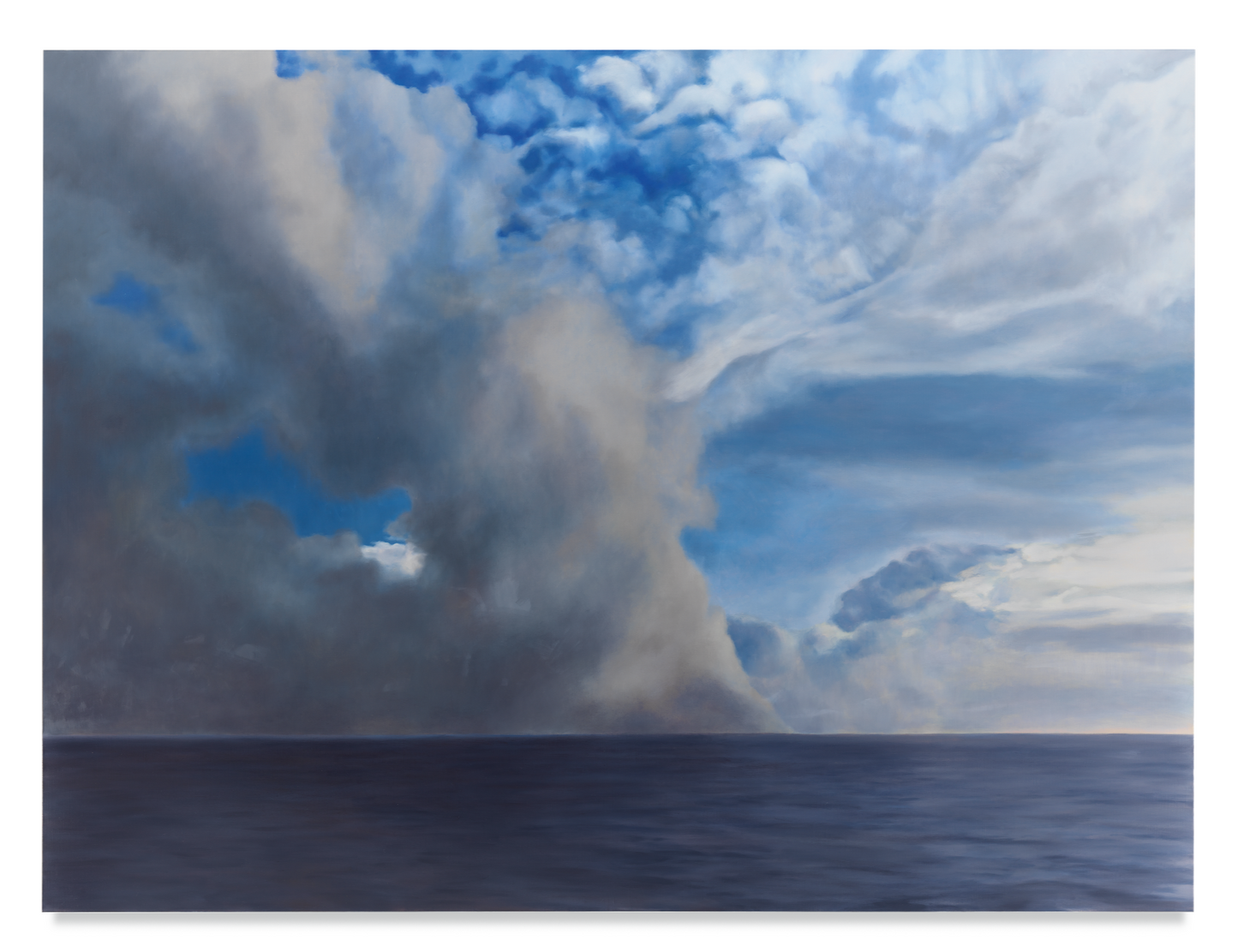A central figure in contemporary American painting since the 1980s, April Gornik is celebrated for her luminous and introspective depictions of land, sky, and water. In Tropical Drift, Gornik depicts a landscape untouched by human presence, yet not untouched by human feeling. The scene is vast, luminous, and quiet, yet it carries weight. It holds the stillness of something sacred and the tension of something slipping away.
Gornik paints not the world as it is, but as it lingers in the mind: unspoiled, imagined, and full of questions. Her light is soft but deliberate; her space, expansive but never empty. The work does not demand attention; it invites reflection. Like much of Gornik’s work, Tropical Drift speaks to a moment when looking at nature also means listening to it. Like Sisley’s pastoral stillness or Hamilton’s haunted terrains, Gornik’s landscape invites a moment of contemplation, reminding us how easily beauty can blur into vanishing.
Her work is held in major public collections including the Metropolitan Museum of Art, the Whitney Museum, the Smithsonian American Art Museum, and the National Museum of Women in the Arts. A committed environmental advocate, Gornik’s practice bridges aesthetics and ecological awareness.


